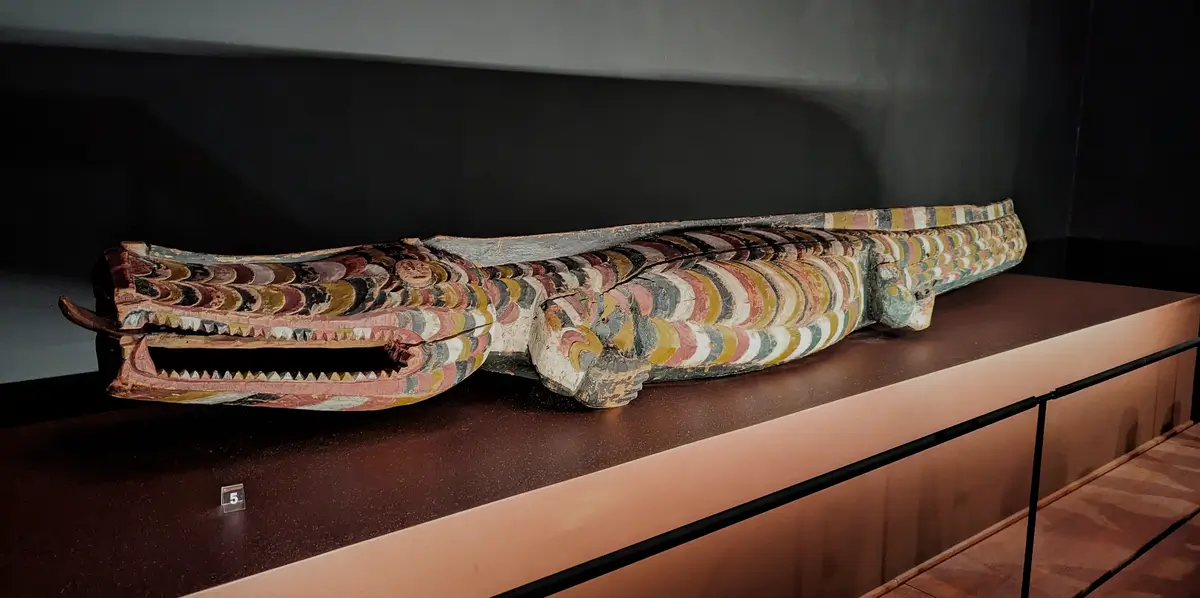Trip Via Time at Borneo Cultures Museum
Trip Via Time at Borneo Cultures Museum
Blog Article
Delve Into the Fascinating World of Borneo's Cultural Heritage: A Comprehensive Overview to the Cultures Gallery Experience
Submersing oneself in the intricate tapestry of Borneo's social heritage belongs to embarking on a trip via time and custom. The blend of indigenous people, typical inventions, captivating efficiencies, and historic narratives housed within the boundaries of the island's museums supplies a glance into a world bristling with extensive legacies and vivid personalizeds. As visitors go across through these databases of society, they are beckoned to discover a realm where past and existing intermingle, welcoming consideration on the resilience and splendor of Borneo's diverse heritage.
Indigenous People of Borneo
Borneo is home to over 50 native people, each with distinct social methods and customs that have been protected for generations. Amongst these tribes are the Iban, recognized for their traditional longhouses and complex tattoos where numerous families reside. The Dayak individuals, one more noticeable group, participate in elaborate spiritual events and are competent craftsmens, crafting complex wood makings and woven fabrics. The Penan people, on the other hand, are nomadic hunter-gatherers with a deep link to the rainforest, using blowpipes for hunting and celebration wild plants for nourishment.
These indigenous people play a crucial function in keeping Borneo's rich social tapestry. Visitors to Borneo have the chance to immerse themselves in the unique lifestyles of these people via social trips, homestays, and community-based tourism campaigns.
Conventional Inventions and Artifacts

One popular instance of typical handicrafts in Borneo is the manufacturing of woven items - Borneo Cultures Museum. Experienced weavers make use of all-natural fibers like rattan, bamboo, and pandan leaves to produce detailed baskets, mats, and accessories decorated with vibrant patterns that hold symbolic meanings within the neighborhood
The art of woodcarving is another significant aspect of Borneo's conventional handicrafts. Craftsmens sculpt complex layouts right into numerous types of timber to generate masks, sculptures, and music tools that not just offer practical objectives yet additionally hold social significance, commonly showing mythology or spiritual beliefs.
Moreover, Borneo is renowned for its beadwork, with artisans carefully crafting beads from materials like glass, seeds, and shells to develop precious jewelry, apparel decorations, and attractive things that display the area's vivid visual customs. These conventional inventions and artifacts not only act as concrete expressions of Borneo's social heritage yet likewise supply understandings into the neighborhoods' beliefs, worths, and means of life.

Social Performances and Festivals
With an ingrained connection to their social practices, the neighborhoods in Borneo come alive via dynamic social efficiencies and festivals that commemorate their heritage. These events display the rich variety of Borneo's ethnic teams, each offering distinct dancings, songs, and rituals that have actually been passed down with generations. Among one of the most distinguished festivals is the Gawai Dayak, commemorated by the Dayak people to note top article the rice gathering season. During this event, standard music fills up the air, intricate dances are executed, and fancy traditional costumes are used. Another significant event is the Pesta Kaamatan, commemorated by the Kadazandusun community to appreciate for the rice harvest. This festival includes cultural efficiencies, including the Sumazau dance, and typical sporting activities like the bamboo dance. Visitors to Borneo can submerse themselves in these celebrations, gaining a deeper understanding of the area's cultural heritage and experiencing the warm hospitality of its individuals. Cultural efficiencies navigate here and events serve as a dynamic suggestion of Borneo's rich social tapestry and the importance of preserving these customs for future generations.
Historical Narratives and Artefacts
Discovering the historic stories and artefacts of Borneo uses an interesting look into the region's rich past and social evolution. Borneo's historical tapestry is woven with varied influences, mirroring the communications between indigenous tribes, Chinese traders, European colonizers, and Malay sultanates. The artifacts located in Borneo display this complex history, varying from conventional crafts like complex beadwork and woodcarvings to archaeological treasures such as old pottery and devices.
One of the most engaging facets of Borneo's historic stories is the preservation of oral traditions passed down with generations. These tales supply insights into the ideas, customs, and lives of Borneo's residents throughout the centuries. The artefacts uncovered from archaeological sites provide tangible links to these narratives, permitting visitors to witness the product society of past cultures firsthand.
Contemporary Cultural Conservation Initiatives

Additionally, curricula and social exchange tasks play a crucial role in elevating awareness regarding the significance of preserving Borneo's unique social heritage. By engaging colleges, galleries, and the larger community in discussions and tasks that celebrate Borneo's varied cultures, conservation initiatives can get momentum and support for lasting sustainability. Partnerships between governmental bodies, charitable companies, and local areas are important in driving these preservation ventures ahead, making certain that Borneo's rich cultural heritage stays dynamic and valued for generations to find.
Final Thought
In conclusion, the social heritage of Borneo is varied and rich, with indigenous people, traditional inventions, cultural performances, celebrations, historical narratives, and modern conservation initiatives all adding to its originality and significance. Site visitors read more to Borneo's cultural galleries can acquire a much deeper understanding and gratitude of the area's cultural heritage, permitting for a much more immersive and informing experience.
Immersing oneself in the complex tapestry of Borneo's social heritage is akin to beginning on a voyage with time and practice.With a deep-rooted connection to their social traditions, the areas in Borneo come active through vivid social efficiencies and festivals that celebrate their heritage. Social efficiencies and festivals serve as a lively reminder of Borneo's rich cultural tapestry and the value of maintaining these customs for future generations.
Moreover, academic programs and cultural exchange tasks play an essential function in increasing understanding about the significance of protecting Borneo's special cultural heritage. Cooperations in between governmental bodies, charitable companies, and local communities are essential in driving these conservation endeavors ahead, making sure that Borneo's abundant social heritage stays vibrant and cherished for generations to come.
Report this page